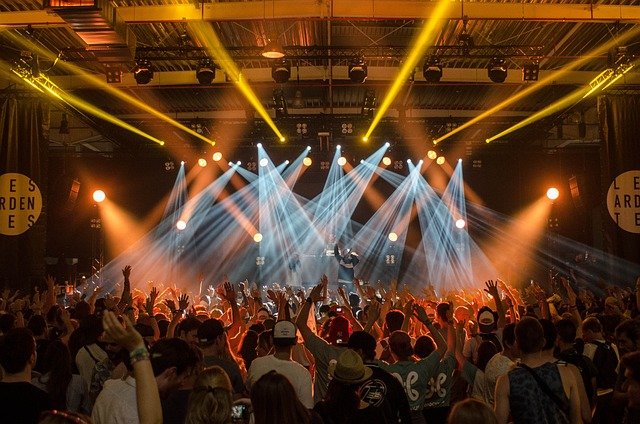Optimizing digital promotion for creative events worldwide
Digital promotion for creative events must balance reach, relevance, and experience. Organizers can use a mix of immersive content, targeted promotion, and analytics to attract diverse audiences across regions. This teaser outlines strategic areas — from hybrid formats to accessibility and merchandising — that support measurable, sustainable growth.

Digital promotion for creative events worldwide requires a deliberate mix of narrative, technology, and local sensitivity. Effective campaigns move beyond one-off posts: they plan audience journeys, measure engagement, and adapt experiences for different markets. Organizers who align promotion with programming, venue realities, and talent goals create continuity between on-site and online audiences, improving attendance, streaming viewership, and long-term brand value. This article examines practical tactics across production, distribution, and operations to help creative events be discoverable, inclusive, and financially resilient.
How can immersive formats enhance attention?
Immersive production techniques—from 360-degree video to augmented reality installations—encourage deeper engagement by letting audiences participate rather than passively observe. Immersive formats can extend a show’s narrative across platforms, enabling pre-event teasers, in-event interactive layers, and post-event archival experiences. When combined with thoughtful curation, immersive content helps creative events stand out in crowded feeds while preserving artistic intent. Prioritize accessibility and clear instructions so immersive access is inclusive; consider streaming-friendly alternatives for those who cannot attend physically or access AR features.
What are hybrid formats for events?
Hybrid events blend live and digital attendance to reach broader demographics and adapt to travel or capacity constraints. A robust hybrid approach includes synchronized streaming, segmented ticketing options, localized programming windows, and venue layouts that support both in-person and virtual viewers. Curation decisions—such as which acts or panels are exclusive versus universally available—affect sponsorship value and merchandising opportunities. Hybrid formats require additional rehearsal time, clear technical protocols, and contingency plans to preserve engagement across channels while ensuring the talent and venue experience remains coherent.
How to streamline ticketing and merchandising?
Ticketing systems should support flexible options: single-event, multi-day passes, tiered access, and integrated streaming add-ons. Combine secure ticketing with user-friendly interfaces and clear accessibility information to reduce friction. Merchandising can be integrated at checkout, bundled with digital extras, or offered via localized storefronts to handle shipping and customs. Analytics on purchases reveal cross-sell opportunities and demographic tendencies. Consider partnerships with established payment and fulfillment providers to manage logistical complexity while protecting attendee data and minimizing checkout abandonment.
How to improve accessibility and localization?
Accessibility and localization extend reach and legal compliance. Provide captioning, clear audio descriptions, adjustable streaming quality, and venue accommodations for mobility and sensory needs. Localization means adapting language, marketing copy, and scheduling to local time zones and cultural expectations; it can also mean curating region-specific talent or complementary programming. Combining accessibility and localization efforts not only widens potential audiences but also strengthens sponsorship appeal by demonstrating inclusive, internationally aware planning and measurement of engagement across diverse communities.
How to integrate streaming, promotion, and engagement?
Streaming should be planned as a complementary channel to live attendance: high-quality feeds, platform selection aligned with audience behavior, and promotional sequencing that teases highlights while preserving some exclusivity. Promotion strategies use short-form content, targeted ads, influencer partnerships, and organic community outreach to build momentum. Engagement metrics—chat activity, watch time, click-throughs, and social shares—inform real-time adjustments and post-event evaluation. Use analytics to refine messaging, understand peak interest points, and measure conversion from promo content to ticketing or merchandise purchases.
Sponsorship, talent, venue and sustainability?
Sponsorship models evolve when events demonstrate measurable digital reach and engagement. Offer sponsors tiered visibility across on-site assets, streaming overlays, and promoted social content. Talent agreements should clarify broadcast rights, merchandising splits, and virtual appearance terms. Venue selection affects technical capability, audience flow, and environmental footprint; prioritize venues with reliable connectivity and green practices where possible. Sustainability measures—reduced print materials, local sourcing for merchandise, and carbon-offset options—can be communicated as part of promotion to align with audience values and sponsor objectives.
Conclusion Optimizing digital promotion for creative events worldwide involves coordinated attention to immersive production, hybrid delivery, seamless ticketing and merchandising, and inclusive localization. Promotion and streaming strategies driven by analytics can increase engagement and sponsorship value while supporting sustainable practices and accessible design. By integrating these elements thoughtfully, event organizers can create resilient, adaptable experiences that reach diverse audiences across borders.




